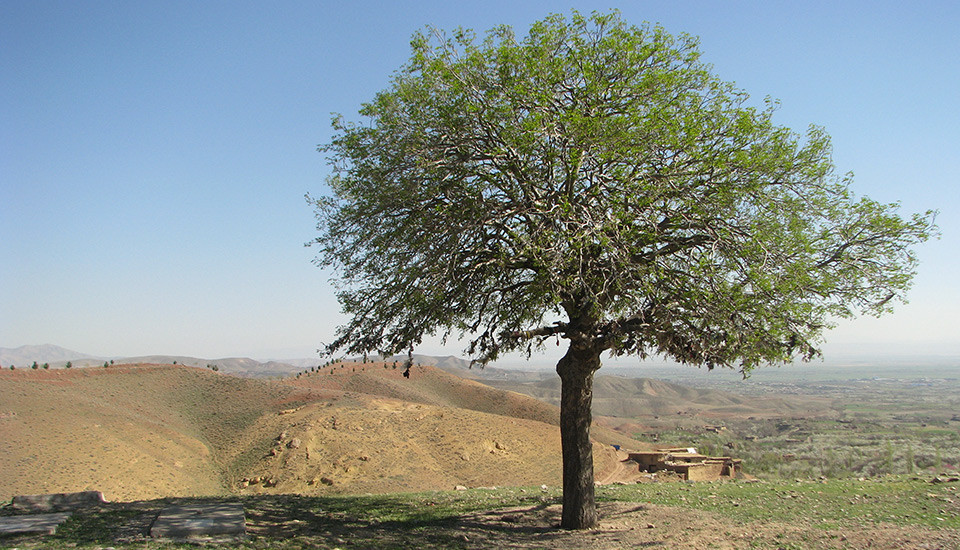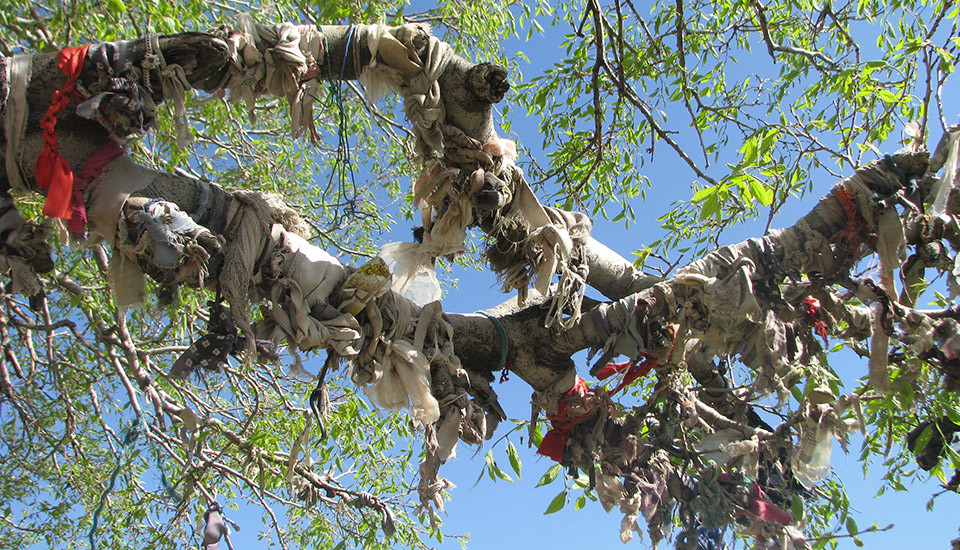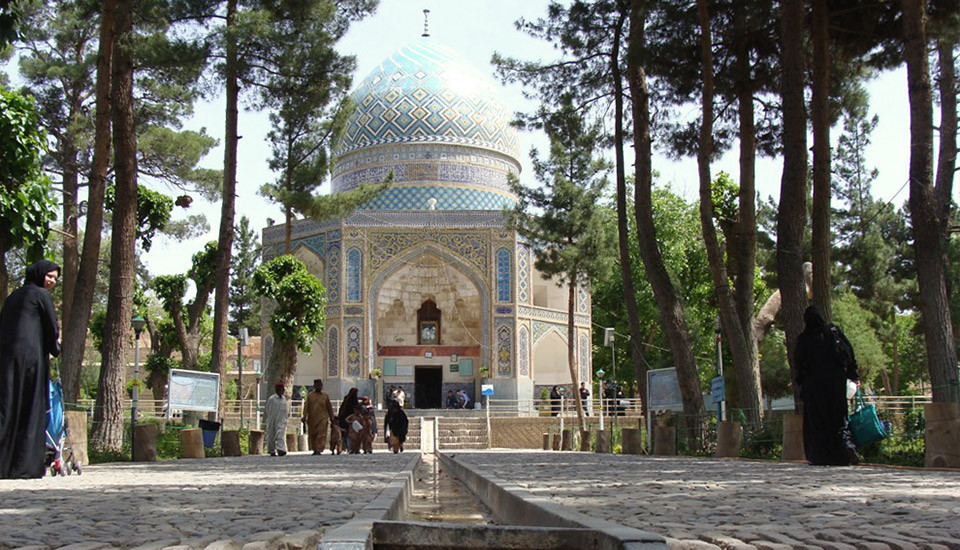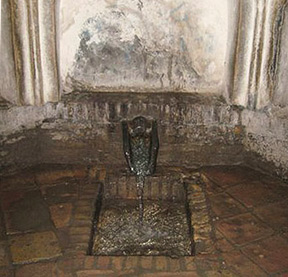Neyshabur je černošská štvrť v severovýchodnom Iráne. Veľká časť z nich sa nachádza v rozľahlej planine obklopenej kopcami a horami. Existujú rôzne posvätné prírodné pamiatky v černošskej štvrti, od posvätných stromov a posvätných prameňov k posvätnej balvana a posvätné záhrady. Oblasť tu niekoľko endemických rastlín a živočíchov. Obsahuje tiež chránených oblastí, a ecotourist destinácie, ako sú vodopády, pružiny, rieky a pútavý geografické rysy, ako horské vrcholy. Podnebie je polosuchých sušiť s priemerným ročným úhrnom zrážok 300 mm.
Napriek tomu, že tieto miesta sú chránené miestnych komunitách, Ich budúcnosť je ohrozená urbanizácia, rast počtu obyvateľov, rozvoj infraštruktúry a cestovného ruchu.
Chránený
Správcovia
Miestni ľudia rešpektujú prirodzené vlastnosti, ako sú zakorenené v ich náboženského presvedčenia. Qadamgah v Neyshabur napríklad, je perzská záhrada, kde je príroda bola predchnutá duchovných hodnôt. Obsahuje sídlo, stromy, bazény a potokov. Jeden stien zámku obsahuje čierny kameň, na ktorom sú dve stopy boli vyrezávané. Ľudia veria, že tieto kópie patrí do 8. imáma šiitov, samec duchovný vodca myšlienka byť potomkom Muhammed, božsky menovaný viesť ľudí. Slovo Qadamgah znamená stopu a odkazuje na túto rozprávanie.
Qadamgah’s history as a sacred site dates back to the pre-Islamic period. Though its original purpose is unknown, it is historically linked to the Sassanid prince Shahpour Kasra, as well as to Imam Ali and Imam Reza. Word goes that in 921 AD Imam Reza stopped at the garden on his way from Medina to Marv. The instant he wanted to perform his ablutions, a spring welled out of the earth. The spring has been regarded sacred ever since and people believe this water has healing properties.
Some plane trees (Plantanus sp.) have been actively conserved for centuries. Plane trees in Iran have been regarded as sacred for a long time because of the shade they offer, their largeness and their green appearance. All over Iran some plane trees have been kept alive for centuries. Legends and beliefs about some specimens have caused people to stay away from them. A long lived plane tree in a village of Neyshabur, napríklad, is conserved by local people because they believe that a man once lost his family due to the breaking of its branches.
Local people still conserve lesser-known sacred sites which have no legal protection. Hodnoty týchto stránok sa učia mladšie generácie a náboženské obrady a postupy sú vykonávané communally, ako oni boli po stáročia. Týmto spôsobom, ďalšie generácie učia chrániť.
Hoci tam je formálne stratégie riadenia, people tend to protect their sites. Some implement short term measures at a local level. Among a wide variety of plans that are carried out for example, a park has been established around a wish tree and tourist services have been developed there.
Akcia
Local people and religious institutions continue their age-old practices. The local offices of Cultural Heritage, Handicrafts and Tourism register long-lived trees as national natural monuments. National natural monuments are relatively small, interesting, unique, exceptional, unconventional and irreplaceable phenomena of plant and animal collections having scientific, historical or natural significance. Protective measures in these areas guarantee their sustainable non-commercial use.
There is also a national plan for inventory and conservation of long lived trees under supervision of the Forests, Range and Watershed Management Organization of Iran. Recent research by Maryam Kabiri draws the attention to the significance of the spiritual values that these and other sacred sites have in relation to nature conservation.
Politika a právo
Právne predpisy Irán má žiadnu zmienku o posvätných prírodných lokalít tak ďaleko. Niektoré posvätné prírodné pamiatky boli oficiálne zachované, pretože sa nachádzajú v chránených oblastiach alebo v národnom pamätníku. Iní boli špeciálne registrované ako národné prírodné pamiatky. Kultúrne dedičstvo a odbor životného prostredia úradu majú slovo pri ochrane národná prírodná pamiatka. Oni obhajujú predovšetkým pre vzácnu flórou a faunou alebo pozoruhodných pozemných útvarov, krajiny alebo dokonca starých stromov. Sú potom priniesol pod ochranou určením vhodného obvod.
Koalícia
Some sacred sites in the area are under supervision of Endowments and Charity organizations (responsible for endowments and sacred places such as mosques and shrines) and a trustee board of local people. The Cultural Heritage, Handicrafts and Tourism Organization is responsible for registration and management of historical monuments and national natural monuments.
Qadamgah, napríklad, has been registered in this way, but it is also under supervision of endowments and charity organization of Iran and of the local trustee board. As in the case of Qadamgah, when a site has both cultural and spiritual values these organisations cooperate in the conservation and management of the site.
Ochranná nástroje
Criteria for conservation have been set up and these criteria have led to maps of areas in the township of Neyshabur which are in need of prioritized conservation. Some recommendations have additionally been formulated in this thesis, which may help with the initial steps for planning political agenda and developing criteria and indices of a national natural monument such that takes spiritual values into account.
Výsledky
Sacred natural sites as a part of bio cultural diversity have been protected for centuries by local beliefs and values. Nowadays these sites are threatened for different reasons. If they are to survive, existujúce opatrenia musia byť podporená právnej ochrany. Za týmto účelom, integrovaný prístup založený na spoločných kritériách a politík v oblasti prírody a kultúry môžu hrať kľúčovú úlohu pri ochrane posvätných prírodných lokalít. Kabir Henda (2011) identifikovaná tieto kritériá pre zachovanie posvätných prírodných miest v černošskej štvrti Neyshabur.
- Bahar, M. (1995) From myth to history. Cheshmeh Publication, Tehran, Irán.
- Daneshdoost, J. (1992) Persian Garden. Asar Journal, Vol.12: 48-52.
- Kabir Henda, M. (2011) The land evaluation for conservation of natural sites with spiritual values, a case study of Neyshabur Township. MSC thesis at Tehran University, Karaj, Irán.
- Taheri, A. (2009) Neyshabur Tourism Guide. Abarshahr, Mashhad, Irán.
- Pakdaman, B (2005) Qadamgah Garden Complex, Amagazine, issue7:86-93.







